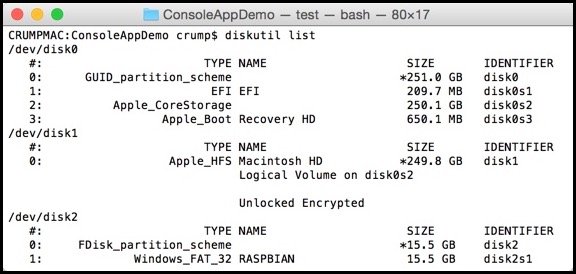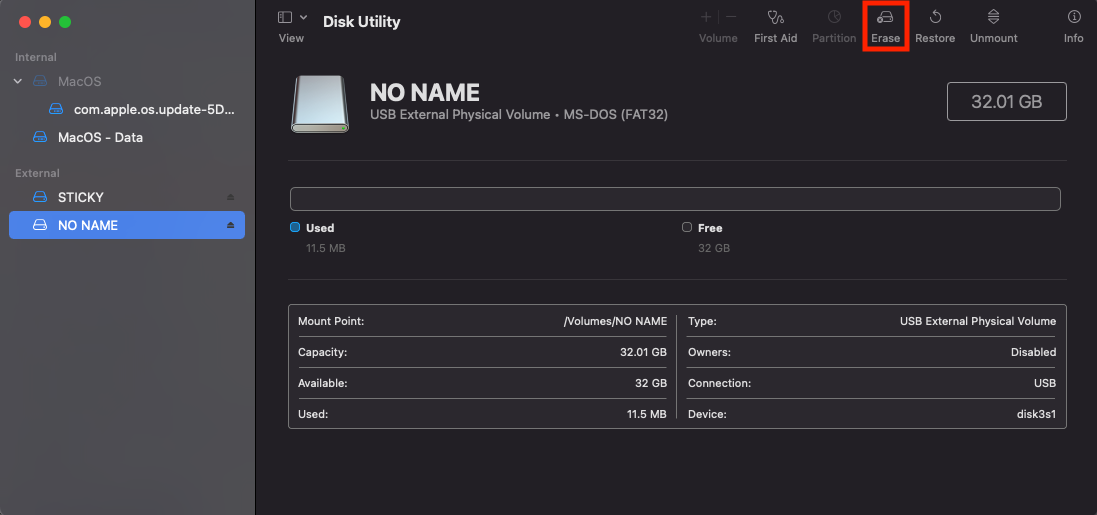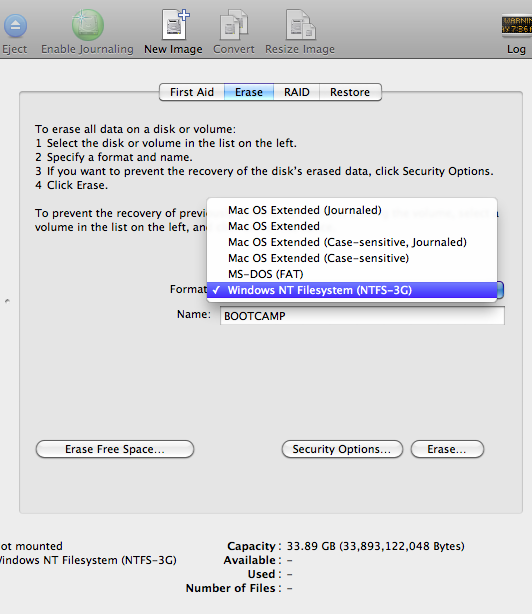
This indicates your USB flash drive has been properly formatted. In the format section it should read "MS-DOS FAT32". Right click on your device and click on Get Info.Ī list of information will be displayed for your device. Under Devices or "Locations" locate your device.

To verify you the USB flash drive has been properly formatted, close out of the disk utility and click on the "Finder" app. Verify the USB Flash Drive is Properly Formatted The disk utility will automatically begin formatting your USB flash drive. Note: In this example we will leave the name of the drive as "UNTITLED" however, you can name your device if you wish.

This option will properly format your USB flash drive to FAT32. Step 4: In the Erase menu, click on the "Format" menu and select "MS-DOS (FAT)". You will notice information related to the USB flash drive in the utility. Step 3: In the Disk Utility tool, locate the inserted USB flash drive and click on it. This will be the tool used to format your USB flash drive. Step 2: Navigate to the "Spotlight Tool" (the magnifying glass) on your computer and locate the "Disk Utility" tool. Step 1: Insert your USB flash drive into a USB port on your computer.

:max_bytes(150000):strip_icc()/mac1-7f6acb3ef3e54ac88fb35fefddd89ec5-3f985e55d9e94dd38579cbfce98ca748.jpg)
For more information on how to externally format a USB flash drive using MacOS please refer to the information below. It is recommended to format a USB flash drive to FAT32 manually before use as most formatting systems will not format to this allocation automatically. FAT32 supports smaller cluster sizes than FAT, thus providing more efficient space allocation and is ideal for larger disks sizes. FAT32 (File Allocation Table) is a derivative of the file allocation table (FAT) file system. How to Format a USB Flash Drive Using Macįor optimal performance with Amcrest devices, a USB flash drive must be properly formatted to FAT32.


 0 kommentar(er)
0 kommentar(er)
